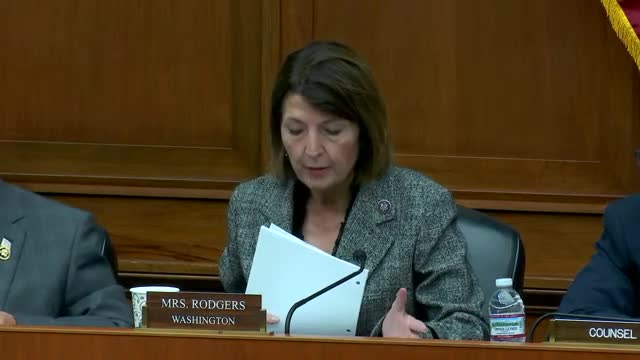EPA faces scrutiny over electric school bus program delays
September 18, 2024 | Energy and Commerce: House Committee, Standing Committees - House & Senate, Congressional Hearings Compilation
This article was created by AI summarizing key points discussed. AI makes mistakes, so for full details and context, please refer to the video of the full meeting. Please report any errors so we can fix them. Report an error »

Concerns surrounding the federal clean school bus program were front and center during a recent government committee meeting, as officials scrutinized the program's implementation and effectiveness. The committee's report, released earlier this week, raised multiple issues, particularly regarding delays in the construction of charging stations by utility companies, which could hinder school districts from deploying their electric buses on time.
In December 2022, the Environmental Protection Agency (EPA) acknowledged that the full impact of these utility delays would not be clear until the 2022 program selectees finalize their rebate processes, expected by October 2024. The committee sought clarity from the EPA on how many school districts had received their buses and were actively using them, but the agency declined to provide specific numbers, citing a lack of information until after the October deadline.
The committee expressed frustration over the EPA's management of the $5 billion program, which allocates 50% of its funding to electric school buses. Despite the significant investment, the EPA has not implemented recommendations to verify the suitability of electric buses for individual school districts, raising concerns about the program's oversight and effectiveness.
The committee highlighted that electric school buses are significantly more expensive than other clean alternatives, costing three to four times as much. Despite this, the EPA has focused predominantly on funding electric buses, with reports indicating that 95-98% of the buses funded under the program are electric. Additionally, challenges remain in manufacturing these buses and ensuring the availability of necessary charging infrastructure for school districts.
As the deadline approaches for the 2022 selectees, the committee's ongoing audit aims to shed light on the status of funds and their expenditure, emphasizing the need for improved management and transparency in the clean school bus initiative.
In December 2022, the Environmental Protection Agency (EPA) acknowledged that the full impact of these utility delays would not be clear until the 2022 program selectees finalize their rebate processes, expected by October 2024. The committee sought clarity from the EPA on how many school districts had received their buses and were actively using them, but the agency declined to provide specific numbers, citing a lack of information until after the October deadline.
The committee expressed frustration over the EPA's management of the $5 billion program, which allocates 50% of its funding to electric school buses. Despite the significant investment, the EPA has not implemented recommendations to verify the suitability of electric buses for individual school districts, raising concerns about the program's oversight and effectiveness.
The committee highlighted that electric school buses are significantly more expensive than other clean alternatives, costing three to four times as much. Despite this, the EPA has focused predominantly on funding electric buses, with reports indicating that 95-98% of the buses funded under the program are electric. Additionally, challenges remain in manufacturing these buses and ensuring the availability of necessary charging infrastructure for school districts.
As the deadline approaches for the 2022 selectees, the committee's ongoing audit aims to shed light on the status of funds and their expenditure, emphasizing the need for improved management and transparency in the clean school bus initiative.
View full meeting
This article is based on a recent meeting—watch the full video and explore the complete transcript for deeper insights into the discussion.
View full meeting